Can You Put Too Much Insulation In The Attic?

As concealed as insulation is in your attic walls and floorboards, the various associated benefits are much more visible. If you’re looking to install insulation or already have it in your home, you’re likely aware that the correct amount can improve year-round comfort and reduce your energy bills.
However, the key words here are “correct amount.” If your home is not appropriately insulated, you’ll have much more difficulty saving money and staying comfortable in both summer and winter seasons. It’s very possible for a home to be under-insulated. In fact, numerous homes across the United States have this very issue. Are you wondering if you can put too much insulation in an attic? In short, yes, it is possible for an attic to be over-insulated.
It’s incredibly common for homeowners to insulate areas of the attic that should not be. In addition to other concerns, too much insulation can reduce its functionality, hinder airflow, cause mold and mildew and eventually lead to wood rot.
Do You Need Insulation Installers?
Get free, zero-commitment quotes from pro contractors near you.

Understanding R-Values
The most common type of insulation for an attic is batt insulation, or sometimes referred to as “blanket” insulation. This type of insulation can be found in a number of R-values (its resistance to heat flow), depending on particular spaces. Generally, you’d fill 2-by-4 stud walls with R-13 insulation, 2-by-6 with R-19 and 2-by-10 ceilings and floorboards with R-30.
Some companies offer batt insulation that is considered to be high-density and is designed to provide high levels of insulation for smaller spaces. However, it’s important to keep in mind that you will not achieve a greater R-value by simply shoving more insulation into an area where that individual R-valued insulation is not formatted for. In this case, the attic can end up having too much insulation.
While we’re on the subject of placing the wrong insulation in improper areas, the same goes for areas with moisture. You should not put insulation in places where moisture is known to accumulate, it will shrink, not efficiently protect your home and could lead to mold and mildew growth.
Attic Circulation
Too much, or improperly placed insulation can hinder the air circulation in your attic. A suitable (generally R-30) insulation should be laid out along your attic floor but should not be placed in the space where the rafters meet the top of the exterior joists and walls. To allow for ample air circulation, this area must be left open.
Drafts are necessary in your attic and stuffing this area full of insulation can be a breeding ground for mold, mildew and potentially even wood rot in the roof sheathing and rafters.
If you think your attic may be under-insulated, instead of placing it in the wall transition of the rafters, walls and joists, lay another layer over a current one.
Attic Rafters
You may be tempted to add as much insulation as possible, in all areas of the attic to help save money on your energy bills and improve the comfortability of your home. However, there are specific recommendations when it comes to insulating your attic and one common mistake homeowners often make is to insulate the roof rafters.
Roof rafters should never be insulated and will almost certainly lead to mold, mildew and eventually sheathing rot in your attic.
Signs Your Attic Isn’t Properly Insulated
The best way to know whether or not your attic may be under or over insulated is knowing the signs of an improperly insulated attic. If you suspect that you have issues with your attic insulation, you’ll likely notice some of the following.
- Ice dams can form when you have snow on your roof and the rising heat from your attic melts part of it, allowing liquid water to flow down the roof.
- Inconsistent temperatures in an area of your home may indicate that the insulation is poor, was incorrectly installed or just generally needs replacing.
- Drafty rooms may be a sign of air leaks. You can use a candle to test this in areas where you may suspect the issue, if the smoke gets sucked up, you have an air leak.
- Higher energy bills than you are expecting may mean that your HVAC system is over compensating for energy loss that exists somewhere in your home. Small leaks will lead to small increases in your energy costs whereas, bigger leaks could end up costing you hundreds of dollars in the long run.
For a more foolproof way of finding out that you have an issue with your insulation, contact a local professional. They can come out, assess the situation and give you options should anything need to be fixed.
What Is the Right Amount of Insulation?
Determining the right amount of insulation for your home will vary based on a number of factors.
- Where you live and, more specifically, the climate in that region will require a particular insulation R-value. These recommended R-values can vary significantly. For example, you will need a much higher R-value of insulation if you live in the Northeast than if you live in Southern California
- The age of your home plays a major role in how much insulation it needs. If your home is older than ten years, you will most likely need to install more insulation.
Whether you are having your home built or renovated, you should conduct energy modelling and make important decisions on balancing performance in your home. For assistance with this, consider contacting an insulation specialist.
How Many Inches of Insulation Should Be in My Attic?
What about if you’re not sure if your attic has enough insulation? Regardless of the type of insulation you have, one easy way to determine if you have enough is to examine the attic space. If the insulation is level with or below the floor joists (can you visibly see them?), you should add more. However, if you cannot see the floor joists because the insulation is concealing them, you likely have enough or may have too much.
For best results, you want your insulation to be evenly distributed throughout your attic. Though the exact amount needed may vary depending on the aforementioned factors, the ideal level for most attics is to insulate to R-38, or between 10 and 14 inches.
Choosing the Right Insulation Type and Material
One of the keys to a properly insulated attic is choosing the type and material that is best for you. For DIYers, there are two choices in regards to attic insulation: loose fill or batt insulation.
Loose Fill
With loose fill insulation, fibers are packed into bags and, using specialized machinery, blown in place to the preferred density and depth. You can choose to rent the particular equipment from a local home improvement center or pour the fill yourself and spread it manually. The manual process requires much more time, won’t yield the greatest results and is very labor-intensive.
Loose fill works best for:
- Attics that contain many obstructions or penetrations that need to be worked around
- Attics with non-conventional joist spacing
- Attics with existing insulation that requires more for filling joints and gaps.
- Low-clearance attic spaces with inadequate headroom for maneuvering during install.
- Homeowners who are looking for a quick job and are comfortable with specialized machinery.
Batt Insulation
Often packaged in rolls, or “blankets,” this flexible insulation material comes in a variety of widths and thicknesses. It’s most often found in 16-inch and 24-inch sizes to fit easily between your home’s framing. You can purchase them with or without a paper or foil backing that serves as a vapor barrier. They can be stacked in layers to attain the required amount of insulation.
Batt insulation works best for:
- Attics with no insulation or conventional joist spacing.
- Attics that have very little penetrations or obstructions to navigate around.
- Attics that allow for ample headroom needed during installation.
- Homeowners that don’t have an issue with cutting the material themselves to fit around any possible obstructions.
The loose fill and batt insulation material options are as follows:
- Fiberglass. Constructed of recycled sand or glass that is melted down and spun into fibers. Cost-effective and very common but less efficient at obstructing airflow than other materials. Comes in R-values ranging from 2.2 to 2.7 per inch for loose fill and 2.9 to 4.3 for batts.
- Cellulose. Created using fibers from recycled paper and then treated for fire and insect resistance. Comes in R-values ranging from 3.2 to 3.8 per inch for loose fill and 3.7 to 3.8 batt insulation.
- Mineral wool. Made from rock or recycled slag fibers. More expensive than other materials but has a natural fire resistance. Found in R-values ranging from 3.0 to 3.3 per inch for both loose fill and batt insulation.
- Cotton. Constructed using recycled denim cloth fibers. More expensive than others but effective at blocking sound and airflow. This material is not an option for loose fill but for batt insulation it is found in R-values ranging from 3.7 to 3.8 per inch.
How Much Can Insulation Save You?
Believe it or not, a properly insulated attic can actually save you money. When your attic is not insulated, all the money that you pay to condition the air in your home simply goes up and out of your roof. According to the Environmental Protection Agency (EPA), the average homeowner saves 15% on heating and cooling costs with proper insulation of their attic, basement, rim joists, and crawl spaces. For most, this equates to a savings of about $200 per year.
Beyond that, a home that is well-insulated is generally more durable overall and more valuable when it comes to resell.
Do You Need Insulation Installers?
Get free, zero-commitment quotes from pro contractors near you.

How Much Insulation Is Too Much?
While it is more common for a home to be under insulated, it is possible to over insulate your attic. In fact, the amount of insulation required by building code is the minimum standard a home can be constructed with; it’s often never the appropriate amount. In some cases, homeowners and builders get overly ambitious and install more insulation than is necessary or even remotely effective.
Achieving the right amount of insulation in your attic is all about striking a balance between the up-front costs and the long-term energy savings and performance you can expect to enjoy from your insulation. Homes should be constructed with the area’s climate in mind and there is an ideal level of insulation for any given geographical region.
The law of ‘diminishing returns,’ as it relates to insulation, means that there is a point where you should stop insulating homes and start spending money on adding heat. Otherwise, you risk spending too much money on insulation and could potentially cause far more harm than good.
Related Questions
Can too much insulation cause mold?
Over insulation, in an attic or anywhere else in the home, can result in poor ventilation. This prevents the humid air from escaping can makes the area more prone to condensation. When you have condensation, you have a breeding ground for mold. So, yes, too much insulation can cause mold.
Can you install fiberglass insulation over blown-in insulation?
There is no issue with installing fiberglass batt insulation over top of existing blown-in insulation. However, make sure that you only use “unfaced insulation,” meaning there is no aluminum foil or paper facing the batts.For more insulation related knowledge, check out: “ How To Install Foam Board Insulation Under Siding” and “ How to Get Rid of Mice in Attic with Blown Insulation.”

Jessica considers herself a home improvement and design enthusiast. She grew up surrounded by constant home improvement projects and owes most of what she knows to helping her dad renovate her childhood home. Being a Los Angeles resident, Jessica spends a lot of her time looking for her next DIY project and sharing her love for home design.
More by Jessica Stone



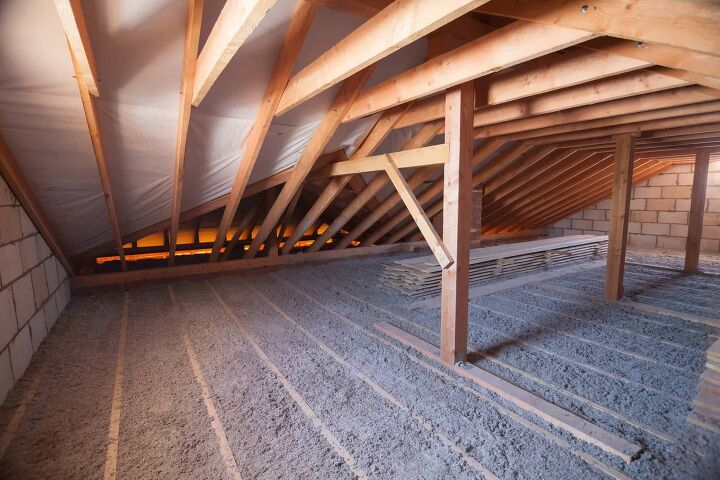







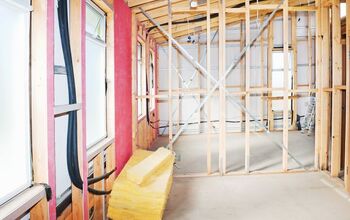
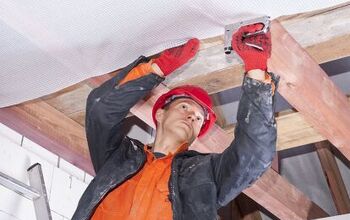
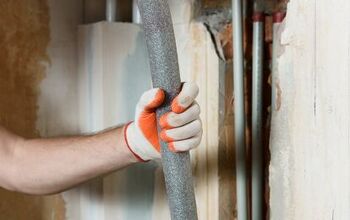
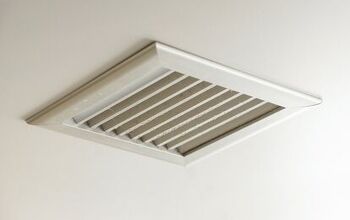
![How To Reset A Whirlpool Cabrio Washer [In 5 Easy Steps!]](https://cdn-fastly.upgradedhome.com/media/2023/07/31/9076531/how-to-reset-a-whirlpool-cabrio-washer-in-5-easy-steps.jpg?size=350x220)











